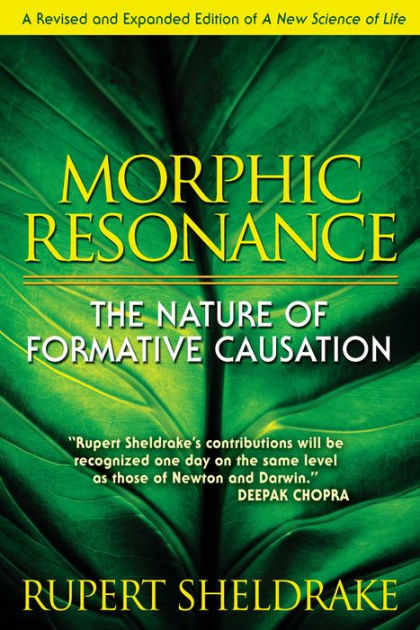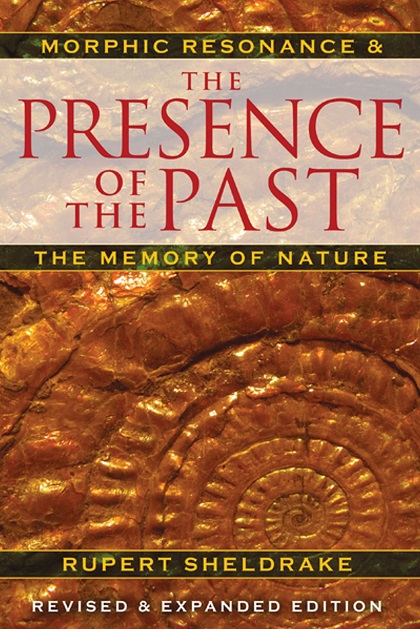|
home | what's new | other sites | contact | about |
||||
|
Word Gems exploring self-realization, sacred personhood, and full humanity
The Human Genome Project of 2000: One of the greatest disappointments
return to "Evolution Controversy" contents page
Editor’s note: The following information can be found in Dr. Sheldrake’s youtube interview with Joe Rogan at 29:20.
The Human Genome Project “There was a huge investment, hundreds of billions of dollars were invested in genomics and biotechnology on the grounds that ‘genes explain everything.’ [They said] ‘there’s one gene for every characteristic, if you can figure out the genes, and manipulate the genes, basically, you can control life.’ and if you can own the genes, own patents on the genes, you can make billions of dollars. “That was the thinking and almost everybody was into that. But I was convinced that genes were overrated and couldn’t do most of these things that people said. What genes do is code for a sequence of amino acids and proteins – protein molecules make up our muscles, blood cells, enzymes, and so forth – these are coded for by genes. you can't predict the shape of a house by analyzing what the bricks are made of “But there’s a huge difference between coding for the right protein and the shape of your nose, for example, or the instincts of a spider to spin a web. It’s like saying you can explain the structure of a building by knowing the chemistry of the bricks – I mean, you have to have bricks, and cement, and timber to make a building, and if you have defective bricks you get a defective building, but it doesn’t explain the plan of the building, the shape of the building. “And so, I was convinced that these things could never be explained by genes, that we needed something like morphogenetic fields and morphic resonance to explain [the shapes and parts of organisms]. So, part of thinking about this was [determining] what regular science could and could not achieve. And, incidentally, one of my predictions that this biotechnology thing would be a disaster, that people would lose huge amounts of money, I advised my friends, if they were investors, not to bother because [the Human Genome Project] was not going to lead to that many useful products. [Question: “Why were you so convinced?”] humans have 20,000+ genes but a rice plant has about 40,000 “Because I saw that the role of genes was totally overrated. And this is, in fact, what’s happened… Most people went along with this [misinformation that genes are the key to understanding the mystery of life]. It’s interesting, in the Human Genome Project, they expected [humans] to have 100,000 genes, but… there were only about 20,000 genes. We have [fewer] genes than a sea urchin. And about half as many as a rice plant [which might have around 40,000]. “That was a huge surprise to people, and it soon became clear that [the Human Genome Project] was not going to deliver on its promises. Craig Venter, who [sponsored] the private Human Genome Project, which was a rival of the publicly-funded one, a competitive guy, he saw it as a race, and he got there first. [Even though these Human Genome Projects were very successful in terms of mapping human genes,] once they’d done it, it immediately became apparent that this information was almost useless [in terms of the quick profits investors were looking for]. from $60 a share to 12 cents "The shares of Craig Venter’s company collapsed in a few days from about $60 a share to about 12 cents a share. When he was interviewed – he has a great sense of humor – he said, ‘I’m the guy who made a million the hard way, by working my way down from a billion.’ Editor’s note: Dr. Sheldrake comments further in his book “Morphic Resonance” on the Genome Project: “… the [stock] market in biotechnology shares (March 2000) collapsed by a staggering $500 billion… The first surprise was that there were so few [human] genes. Rather than the predicted 100,000 or more, the final tally of about 25,000 was very puzzling, and all the more when compared to the genomes of other animals much simpler than ourselves. There are about 17,000 genes in a fruit fly… many species of plants have far more genes than we do… When the complete chimpanzee [genome] was published [in 2005] [the director of the project offered,] “We cannot see in this why we are so different from chimpanzees.”
It was shocking to find that the diversity of body plans across many different animal groups was not reflected in diversity at the level of the genes. As two leading developmental molecular biologists have commented, “Where we most expect to find variation, we find conservation, a lack of change.”
"the missing heritablity problem" “The thing is, it didn’t work [the way they thought it would]. Around four or five years ago, there was [another, related] development in science… called “the missing heritability problem.” What they did was to take the genomes [gene-maps] of 30,000 people, because it’s quite cheap to do this today… to figure out what genes do what. [They knew] these people's height, the history of their diseases, and so forth. They started with ‘height’ because height’s easy to measure, you just need a tape-measure. And it’s already known that tall parents tend to have tall children, and short parents, short children. You can predict the height of grown children based on the height of the parents with an accuracy of 80%. In the technical language, they say 'height is 80% heritable.' predicting height with only 5% accuracy by using genomes "Well, they’d figured out the genomes of 30,000 people, they knew their height, so they then ran all these correlations and statistics to figure out which genes where involved with height, and they found about 50 genes were involved with controlling height. Then they found that some were more important than others and they made their best models, weighting some more than others, and coming up with predictions. And then they picked some people at random, did all the sums and calculations, ran the computer simulations, and predicted these peoples’ height on the basis of the genomes. And then they looked up the height to see how good this method was at predicting – it turned out that they could predict height with this method with an accuracy of 5%! Now you can do it with an accuracy of 80% just by using a tape-measure, and it’s billions of dollars cheaper. The gap between the 5% and the 80% -- the 75% that’s not explained by the genes -- is called 'the missing heritability problem.' "And it turned out the same for predicting diseases. There are a few diseases where a defective gene gives a defective protein, and you get a clear predictive value – cystic fibrosis is an example – but for most diseases the predictive value of the genome was only about 5% to 10%. All these companies sprang up to map genomes and predict diseases, but [they’ve failed] because you cannot predict with more than 10% accuracy. “no one had ever invented such a massive money-losing scheme in the history of humanity.” “Genome sequencing is good for some things; for example, if you want to find out where your ancestors came from [i.e., racial background], it’s very good for that. So, it’s not useless, but nothing like the bonanza of profits that people were expecting. There was a report by the Harvard Business School a few years ago on the biotech business, and they said, “no one had ever invented such a massive money-losing scheme in the history of humanity.” I think that’s because it was based on a false assumption of what genes do [and materialists wanted so very much for this to work out]."
|
||||
|
|


